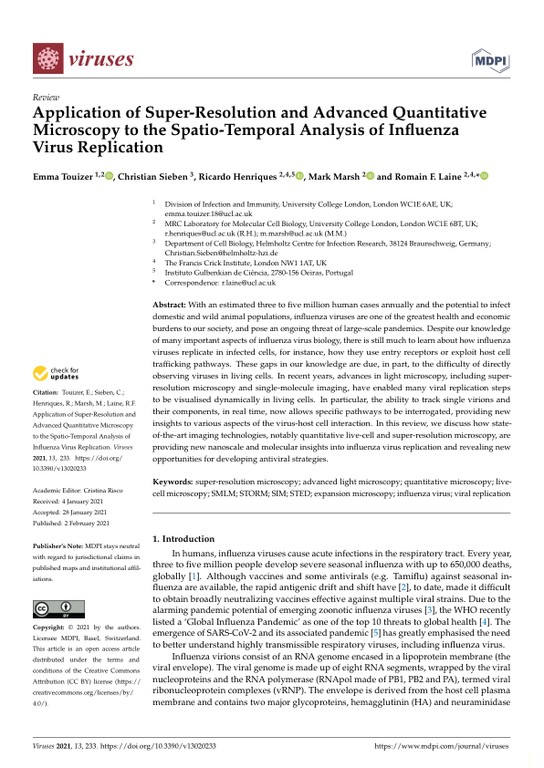Application of Super-Resolution and Advanced Quantitative Microscopy to the Spatio-Temporal Analysis of Influenza Virus Replication
Technologies: NanoJ-VirusMapper and Super-Beacons
Review published in Viruses, February 2021
Publisher: MDPI

With an estimated three to five million human cases annually and the potential to infect domestic and wild animal populations, influenza viruses are one of the greatest health and economic burdens to our society, and pose an ongoing threat of large-scale pandemics. Despite our knowledge of many important aspects of influenza virus biology, there is still much to learn about how influenza viruses replicate in infected cells, for instance, how they use entry receptors or exploit host cell trafficking pathways. These gaps in our knowledge are due, in part, to the difficulty of directly observing viruses in living cells. In recent years, advances in light microscopy, including super-resolution microscopy and single-molecule imaging, have enabled many viral replication steps to be visualised dynamically in living cells. In particular, the ability to track single virions and their components, in real time, now allows specific pathways to be interrogated, providing new insights to various aspects of the virus-host cell interaction. In this review, we discuss how state-of-the-art imaging technologies, notably quantitative live-cell and super-resolution microscopy, are providing new nanoscale and molecular insights into influenza virus replication and revealing new opportunities for developing antiviral strategies.